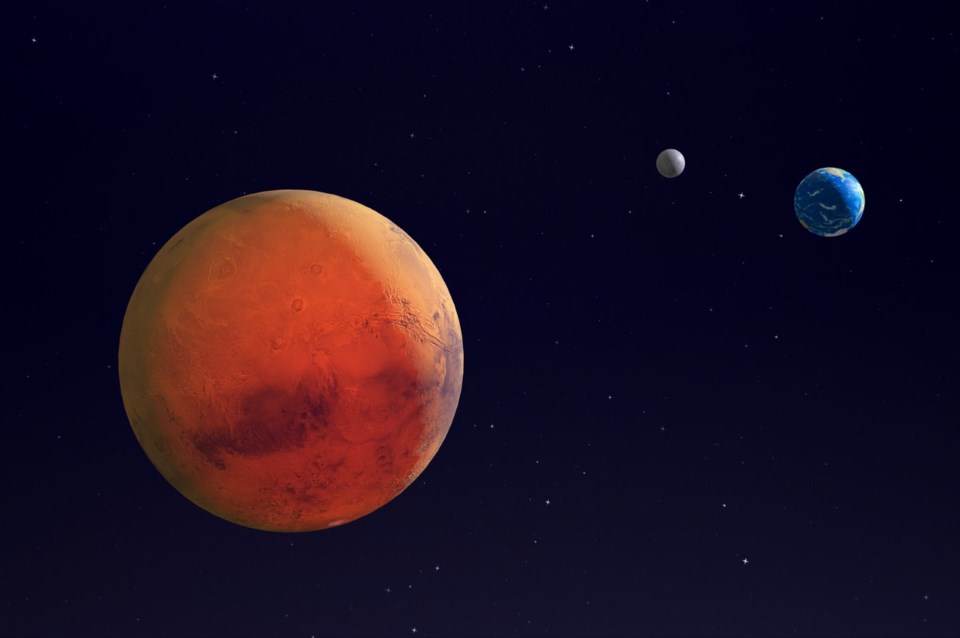The moon begins the month as a thick waxing crescent, reaching first quarter Oct. 2. Oct. 5, Saturn is greeted by our satellite, just four degrees away. Then, Oct. 7, Neptune gets similar treatment, just three degrees north. A day later, the moon slides by Jupiter, a day ahead of full phase Oct. 9. These events come in rapid-fire succession as Uranus is occulted Oct. 12 for most of Canada and the western Unitecd States. Mars is joined by the moon Oct. 14 and Pollux is 1.8 degrees north Oct. 17. New moon Oct. 25 also opens an eclipse season with a partial solar eclipse, visible over eastern Europe — two weeks later is a lunar eclipse Nov. 8. The moon is at perigee of 368,290 kilometres Oct. 29.
Mercury enters the best morning apparition for the year for Northern Hemisphere viewers, but the swift planet quickly loses ground to the bright sun, so that, by mid-month, it is lost in the glare.
Venus is too close to the sun to be seen.
Mars get brighter and brighter throughout October, and, at the same time, its eastward motion slows to a standstill among the stars of Taurus, the bull, becoming stationary Oct. 30. Then, Mars begins a retrograde loop lasting for a couple of months. Oct. 15, the waning gibbous moon passes by the Red Planet.
Jupiter rises in the evening sky as October begins, becoming brighter and brighter with each passing day. Three times during the month, two shadows of Jupiter’s Galilean moons are visible against the gas giant’s cloud tops – Oct. 12, 19, and 26 – terms a double shadow transit. Jupiter continues retrograding through the month. Remember, this apparent westward motion for a planet that orbits west to east is caused by the Earth’s faster orbital motion — we pass the planet, which makes it appear the outer planet moves in the opposite direction. Early astronomers had great difficulty trying to understand this motion, because they thought, incorrectly, that Earth was at the centre of the universe, orbited by the sun and planets. It was Copernicus and Galileo who set the record straight in the 17th century, claiming that the planets orbit the sun.
Saturn continues retrograde motion among the stars of Capricornus, slowing to a standstill Oct. 24th. The moon glides by to the south Oct. 4 and 5.
Uranus rises near sundown and is in the sky all through the night. The moon occults the gas planet on the evening of Oct. 11 and morning Oct. 12, an event visible to most of North America.
Neptune is visible all night (with telescopic aid) throughout the month, among the stars of Aquarius. The moon is nearby Oct. 7.
The zodiacal light is visible in the eastern morning twilight for the first week of the month.
James Edgar has had an interest in the night sky all his life. He joined the Royal Astronomical Society of Canada in 2000, was national president for two terms, is now the editor of the Observer’s Handbook, and production manager of the bi-monthly RASC Journal. The IAU named asteroid 1995 XC5 “(22421) Jamesedgar” in his honour and in 2021 he was awarded a Fellowship of the RASC.




